Only rarely must the Golden Gate Bridge withstand earthquakes or strong wind, but everyday it must fight another threat: corrosion of the steel which creates a byproduct called rust.
Steel is an alloy comprised principally of iron along with small amounts of other elements such as carbon or nickel. When steel is exposed to the oxygen in air and to water, the iron changes through a chemical process called corrosion; this change creates rust which erodes the steel making it slightly smaller and weaker than before the corrosion took place. On the Bridge, fortunately, the steel sections were originally over-sized in anticipation of corrosion and other threats.
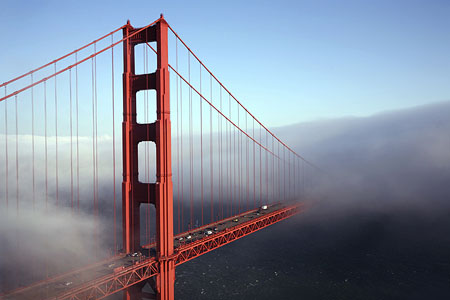
Water vapor evaporating from the ocean is all around the Bridge and often cools and condenses to form fog. Corrosion is sped up by the presence of salt. The sea air around the Bridge not only supplies the water needed for rust -- it is also loaded with millions of tiny particles of salt.
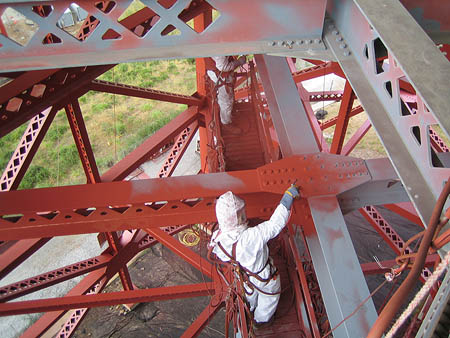
In the 1930s the original primer paint on the Bridge was two-thirds (by weight) lead. Lead is a good material for preventing rust, but is harmful to people and the environment. Today different areas of the Bridge are re-painted about every ten to twenty years. Due to environmental concerns, today’s primer contains zinc instead of lead. The zinc protects the steel, because zinc corrodes more easily than steel. Zinc serves as a sacrificial metal, so the steel does not rust when zinc is present. On top of that zinc primer is a top coat of paint in the Golden Gate Bridge’s signature color called International Orange.
More Images
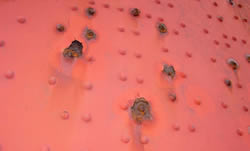 |
Close-up of Rivets with Rust -
When the protective paint layer peels or cracks, steel is exposed to oxygen and water which initiates corrosion. Maintenance is required to remove the rust down to bare steel before re-applying primer and top coats of paint.
|
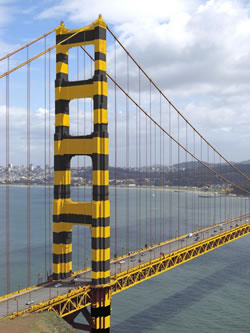 |
Besides International Orange, other color schemes were considered when the Bridge was built. One alternative that was proposed was a striped design to make it more visible to ships and airplanes.
|
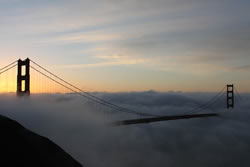 |
Fog in the Golden Gate.
|
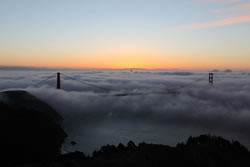 |
More fog in the Golden Gate.
|
Explore this Topic Further
Rust Formation and Mitigation
Chemical Reaction for Rust from chemical reaction.org (grade 6 through adult)
This web site explains the formation of rust and provides the equations of the chemical reactions that take place.
Painting the Golden Gate Bridge (grade 3 through adult)
On this web site the Golden Gate Bridge, Highway and Transportation District (GGBHTD) describes the continuous process of painting the bridge to protect it from corrosion.
Why the International Orange Color? (grade 3 through adult)
On this web site the Golden Gate Bridge Highway and Transportation District (GGBHTD) explains the choice of International Orange for the bridge and provides the formula for mixing the paint color.
Hands-on Activities
Rust Chemistry: How Does Rust Form? From education.com (grades K-8)
This experiment demonstrates how different chemical environments affect the speed and amount of rust formation.
Must it Rust? The Reaction between Iron and Oxygen by Kathleen Heffner and Emily Dorean (grades K-8)
This experiment tests the corrosion properties of water and vinegar, modeling two of the main environmental causes of increased rust corrosion. Includes assessments, extensions, and cross-references to other subjects.